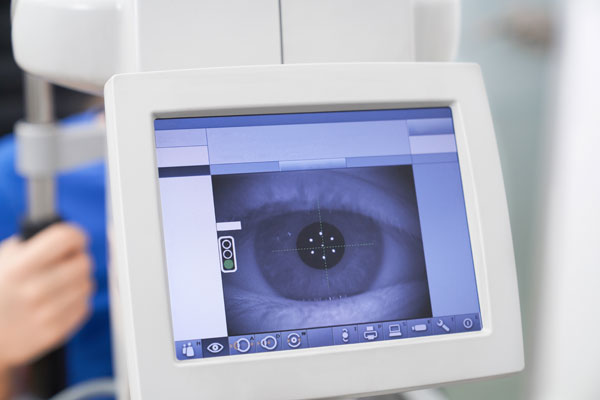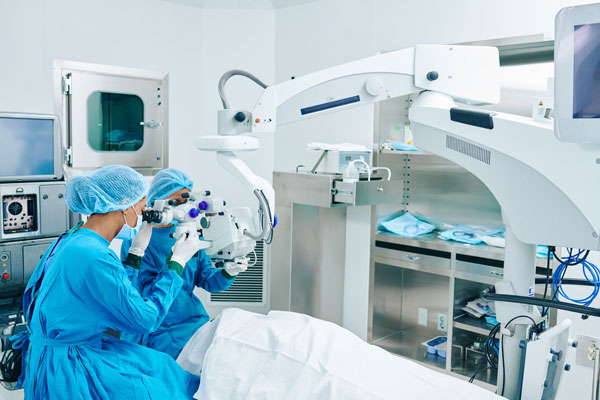Diagnosed With Cataract? What’s Next?
Some would have probably heard about this numerous times or maybe from someone you know who had their cataracts removed. Some of you would be scared about cataract surgery or might not know what cataract is. Here are the things that you should know about cataract surgery in Singapore!
What is a cataract ?

Well, cataract is an optically-degraded clouding and hardening of the normally clear crystalline lens of the eye. Most cataracts develop slowly over time, causing symptoms such as blurry vision, a faded appearance of objects, more difficulty seeing in dim light, glare and halos.
Who is at higher risk for cataracts?

Individuals with medical or coexisting eye problem
For example, patients with diabetes or who are on long-term or oral steroids, or even had prior eye trauma or eye surgery are all at higher risk of developing cataracts. These individuals with inflammatory eye disease are also predisposed towards earlier development of cataracts.
Younger individuals can have cataracts
Cataracts can occur in children, adolescents and young adults for various reasons. One of the most common being prior eye trauma. Younger individuals with cataracts may also have had them from birth, or have a family history of early onset cataracts which increases the risk of early cataract.
Those with a history of infection or inflammation in the eye, or other coexisting eye conditions such as retinal disease and pediatric glaucoma are also more prone towards cataract development.
Individuals who are older
Majority of cases, cataracts occur as a result of getting older in age. The average age range of onset cataracts is between 50 to 80 years of age. Most people start getting around the age of 40 but probably would not notice any of the symptoms until later on at the age of 50.
Other than these few, you will likely develop cataracts if you:
- Smoke cigarettes
- Live in an area with bad air pollution
- Use alcohol heavily
- Have a family history of cataracts
I have been diagnosed to have a cataract. Must I definitely have my cataract removed?
Mild cataracts usually cause little or no vision problems. Your doctor may simply observe the cataract until it has more significantly affected your vision or lifestyle before considering surgery. With mild cataracts, the only change may be a slight year-over-year change in your eyeglass prescription, most often an increase in prescriptions for nearsightedness or nearsightedness. As cataracts affect vision, it can increase overall opacity, decrease contrast, where images are darker, or dazzle around lights at night.
It should be mentioned that cataracts in some very lucky patients may never reach the stage where they need to be removed in their lifetime. But once a person is struggling to see clearly through daily tasks and driving, it might be a good time to consider cataract surgery.
The flip side of it, however, is that if cataracts are left for too long, they become superseded. Such cataracts are technically more difficult to remove surgically. They can certainly still be safely removed, although the surgical risk profile and degree of risk are slightly increased. So, once your eye doctor determines that cataracts are causing you to have reduced vision quality or function, then you should consider surgery.
A final consideration when cataract surgery may be recommended sooner rather than later is in patients with structural narrowing of the intraocular fluid passage. This is a structural defect that can progress over time into a form of glaucoma known as narrow-angle glaucoma. Here, cataract removal not only improves vision, but also corrects structural abnormalities of the narrow ejection tract and reduces the risk of angle closure progression. We recommend you to make an appointment with your cataract surgeon to do a thorough examination before making your next move.
Cataract surgery sounds scary. What exactly happens during the procedure?
Cataract surgery involves the following steps, all performed by you eye surgeon
- A micro-incision is made just at the edge of the cornea to allow instruments to access the cataract.
- Using very fine forceps, an opening is made on the top surface of the capsular bag in order for the surgeon to gain access to the cataract, which resides in the capsular bag.
- The surgeon uses a phacoemulsification handpiece device placed through the corneal incision to break up the lens material.
- The broken-up lens matter is removed from the eye by suction through the same phacoemulsification handpiece.
- An intraocular lens (IOL), which is essentially an optically clear, artificial lens implant, is placed into the capsular bag, taking the place and function of the cataractous lens.
- The corneal wound is sealed without stitches.
What is laser-assisted cataract surgery?
The more recently-developed technique of cataract removal involves the use of a femtosecond laser for some of the steps in the cataract operation. The femtosecond laser automates the following steps.
- Creation of minimally invasive surgical access incisions into eye
- Creation of the opening in the capsular bag to access the cataract
- Breaking up the cataract into more minute pieces
These steps will be performed in the same sitting by the femtosecond laser within a couple of seconds. The surgeon then has subsequently processed the remaining steps of the surgery in the usual manner which is using a phacoemulsification handpiece device placed in your eye to remove the lens particles and suctioning up these pieces.
The femtosecond surgery may allow more accurate IOL placement in the eye. It may reduce the amount of phacoemulsification energy delivered and may be advantageous to the surgeon in operating on more complex cataract cases. However, these perspectives are not universally held by all surgeons.
Nevertheless, femtosecond laser cataract surgery may hold a slight benefit in patients in selected cases. As there is an increased cost and surgical time, it is certainly advisable that you discuss your specific need with your surgeon.

What are the Risks of Cataract Surgery?
The vast majority of these complications such as dry eye, raised eye pressures, usual inflammation expected after cataract surgery, are relatively mild or transient and can be managed with medications. Two of the more important complications to be aware of are:
- Posterior capsule rupture
- Posterior capsule opacification
What can I expect on the Day of surgery?
Before surgery
After arriving at the clinic, you will be given eye drops to dilate your pupils (the drug that will be operated on). Anesthesia eye drops will also be injected to numb your eye. Most cataract surgery is performed under local anesthesia. Sedation may also be given to help you relax during surgery. The vast majority of patients are performing very well under local anesthesia. Of course, general anesthesia is also an option, but this is often absolutely necessary for patients in special circumstances, for example. tremors that limit the ability to lie completely still during activity.
During surgery
Before the operation, you will first clean your eyes with a disinfectant, and then your face and torso will first be covered with a sterile cloth to keep the surgical area clean. Of course, being covered with cloth can cause anxiety in some patients, so sedation is important to reduce some anxiety. You don’t have to worry too much about not being able to open your eyes, because the eyelids are supported by a special micro-stent to ensure that the eyes remain open during the entire procedure. You also don’t have to worry about your eyes moving excessively during the operation, because the local anesthetic is placed in the eyes and the phaco phone is placed inside during the operation, the eyes are unlikely to move too much.
Sometimes your eyes may feel cold from the irrigation fluid used during the operation, and you may also hear the hum of the phaco while it is working. At some point during the operation, you may still feel some pressure in your eyes, but there is usually no obvious pain because your eyes have been locally anesthetized. Also, the focus of attention in front of you may be very dazzling and your vision may fluctuate as the operation progresses. When your cataract is completely removed, you will notice that your vision suddenly becomes very blurry and can only be restored after an intraocular lens implant is placed in your eye.
The surgery will be completed in approximately 15 to 30 minutes.
What can you expect after surgery?
- Immediately post-surgery
- A few days to weeks post-surgery
- Follow-ups with your surgeon post-surgery
Conclusion
Cataract is a very common eye disease and cataract surgery in Singapore is one of the most frequently performed operations in the world. Their downtime is short and people usually get up and walk within a few days to resume their daily activities with new vision. The vast majority of patients continue to enjoy greatly improved vision. Advances in cataract surgical instruments and IOL technology now mean that your vision can be restored and it can also give you new vision within a certain distance.
Do more research about Singapore cataract surgeons as they are one of the best eye surgeons in Singapore. The more research you do the more you will understand about it. If you want to have your cataract taken out by them, you can go for a consultation.

